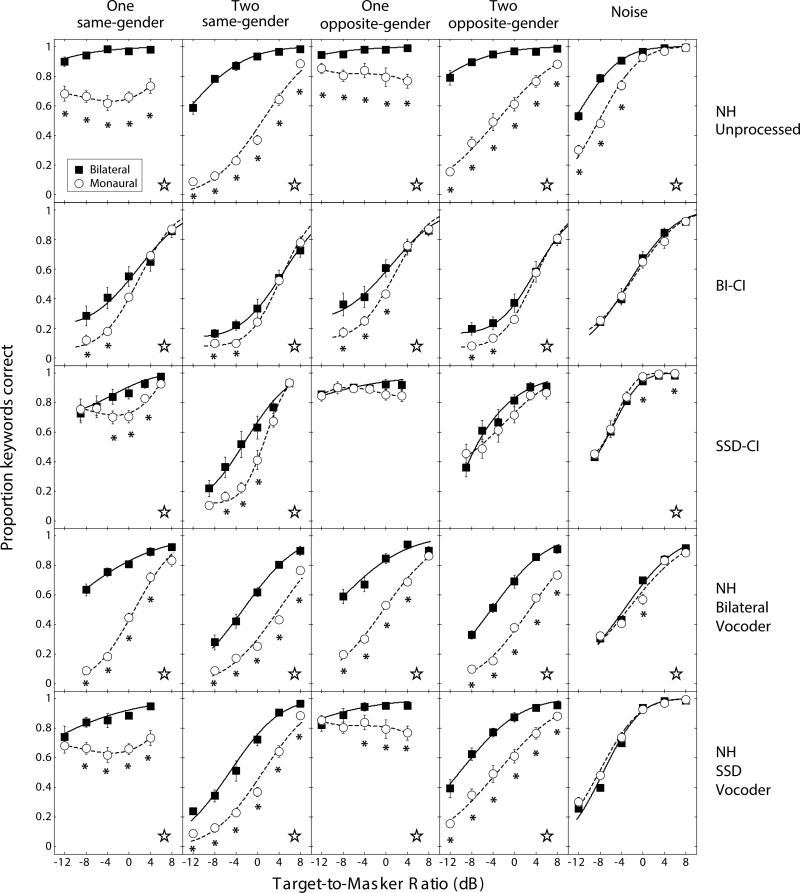Fig. 1.
Results of experiment 1 showing speech-identification performance as a function of TMR. The target signal was always presented monaurally. The interferers were presented monaurally to the same ear as the target (monaural condition) or diotically (bilateral condition). Conditions where bilateral performance was significantly better than monaural performance are identified by asterisks (for individual TMRs) and large open stars (for data pooled across TMRs). Error bars indicate ±1 standard error of the mean across listeners.

